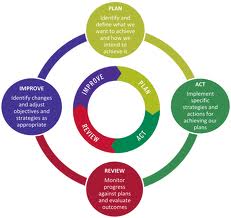Below is Table of content for a typical Management System Manual which can be used for developing the manuals for quality, safety or HSE systems.
1. PURPOSE & SCOPE
- 1.1. Vision, Mission and Values
- 1.2. Our Core Values
- 1.3. Our Stakeholders
- 1.4. Outline Organisation Structure – Appendix B
- 1.5. Policy Statement – Appendix C
2. QMS REQUIREMENTS and DOCUMENT MATRIX
2.1. General Requirements
2.2. Specific Requirements
3. DOCUMENTATION REQUIREMENTS
3.1. The Integrated Management System
3.2. System Structure
3.3. Control of Documents
3.4. Control of Records
4. MANAGEMENT RESPONSIBILITY
4.1. Management Commitment
4.2. Focus on our Clients
4.3. Management System Policy
4.4. Planning
4.5. Management System Planning
5. RESPONSIBILITY, AUTHORITY AND COMMUNICATION
5.1. Responsibility and Authority
5.2. Management Representative (MR)
5.3. Communication
5.4. HSE Communication
5.5. HSE Consultation
5.6. Management Review
5.7. Customer Relations Management
6. RESOURCE MANAGEMENT
6.1. Provision of Resources
6.2. Human Resources
6.3. Competence, Awareness and Training
6.4. HSE Specific Training and Competence
6.5. Plant, Equipment and Infrastructure
7. PRODUCT REALISATION
7.1. Business Development
7.2. Construction & Project Planning
7.3. Client-Related Requirements
7.4. Design Control
7.5. Engineering Control
8. PURCHASING
9. PROCESS CONTROL
10. QUALITY PLANNING
11. HEALTH, SAFETY & ENVIRONMENTAL MANAGEMENT
11.1. Identification of, and Compliance with Legal Requirements
11.2. Emergency Preparedness and Response
11.3. HSE Incidents, Non-Conformance, Corrective & Preventive Action
11.4. Performance Measurement and Monitoring
11.5. Hazard Identification, Risk Assessment & Determining Controls
11.6. Aspect and Impacts Identification
11.7. HSE Objectives, Targets and Management Programs
11.8. HSE Line Management & Organisation
12………. MANAGEMENT OF MEASURING AND TEST EQUIPMENT
13. INTERNAL AUDITS
14. MONITORING AND MEASUREMENT OF WORK
15. NON-CONFORMANCE AND CORRECTIVE ACTION
16. ANALYSIS OF DATA
17. CONTINUAL IMPROVEMENT
18. PREVENTIVE ACTION

